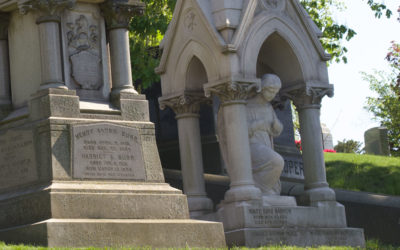Comparing Poems
Raymond Carver & Robert Hayden
We will follow Pound’s suggestion by putting up for your inspection and thoughtful consideration some specimen works of poetry. Here is the first of two poems in which a speaker considers his relationship to his father. We begin with a poem by Raymond Carver. Our approach will simply be to walk through the poem, stanza by stanza, noting details of interest that provoke our thinking. Here is Carver’s poem:
Photograph of My Father in His Twenty-second Year
October. Here in this dank, unfamiliar kitchen
I study my father’s embarrassed young man’s face.
Sheepish grin, he holds in one hand a string
of spiny yellow perch, in the other
a bottle of Carlsbad beer.
In jeans and denim shirt, he leans
Against the front fender of a 1934 Ford.
He would like to pose bluff and hearty for his posterity,
wear his old hat cocked over his ear.
All his life my father wanted to be bold.
But the eyes give him away, and the hands
that limply offer the string of dead perch
and the bottle of beer. Father, I love you,
yet how can I say thank you, I who can’t hold my liquor either,
and don’t even know the places to fish?
Carver describes a photograph of the speaker’s father holding a bottle of beer in one hand and a string of fish in the other. We may never have seen a photo of our own father holding either of these, but we have very likely seen something not far different. In reading Carver’s poem, we might be stimulated to consider our own relationship with our father (or other family members), though the focus of our consideration may differ significantly from that of Carver’s speaker. That’s one of the inescapable effects literary works have upon readers, that prompting of personal reflection.
What’s striking about the photo the speaker describes is its mixture of factual detail and interpretive explanation. The father’s face is “embarrassed” and his grin “sheepish.” From the start, the poem is as much about the speaker’s connection (or disconnection) with the father as it is about the father himself. We might wonder why the father is embarrassed and why his grin is sheepish and what those two words together reveal about him. The word “study” suggests that the speaker is looking for something in this picture of his father—something important to him.
The second stanza continues in the descriptive mode, but shifts in line three to something more interpretive, even judgmental. Notice the generalizing sentence that concludes the second stanza: “All his life my father wanted to be bold.” To what extent does this sentence imply that though being bold is what the father may have wanted for himself, it was unlikely that he achieved it?
The first word of stanza three, “But,” signals an important shift and confirms our suspicion that the speaker’s father wasn’t at all bold. The first sentence repeats the details of beer and perch, while adding a reference to the father’s eyes—which the speaker is reading, studying, interpreting. The second sentence contains an important and powerful shift of tone. Here, at the end of the poem, the speaker addresses his father directly, as if he were present.
There the speaker (and we suspect perhaps the poet as well) asserts his love for his father even while intimating that he is disappointed in what his father has and has not passed on to him. This final sentence is the only question in the poem; it leaves open to our interpretation the speaker’s attitude toward his father.
In considering the poem’s values, we might wonder whether Carver’s speaker is overly concerned with his image as a “man” who can “hold his liquor.” We might wonder whether the speaker blames his father for passing on to him an inability to drink liquor without showing its effects. We might also consider whether the speaker is too hard on himself for not measuring up to his father’s fishing skills. Does the speaker blame the father for not teaching him “the places to fish?” To what extent is the image of manhood the poem describes celebrated and/or questioned by the poem?
Like Raymond Carver’s poem, Robert Hayden’s “Those Winter Sunday” creates a portrait of a father as seen through the eyes of his son. Like Carver’s poem, too, Hayden’s concludes with a questions, a repeated question, in fact, that, like the question of Carver’s speaker, carries an emotional charge the poet leaves for us to interpret.
Robert Hayden
Those Winter Sundays
Sundays, too, my father got up early
and put his clothes on in the blue-black cold,
then with cracked hands that ached
from labor in the weekday weather made
banked fires blaze. No one ever thanked him.
I’d wake and hear the cold splintering, breaking.
When the rooms were warm, he’d call,
and slowly I would rise and dress,
fearing the chronic angers of that house.
Speaking indifferently to him,
who had driven out the cold
and polished my good shoes as well.
What did I know, what did I know
of love’s austere and lonely offices?
The poem’s first words indicate that the housewarming chores the father performs were a daily ritual, not an occasional or even a weekday occurrence. We notice how Hayden combines images of cold and warmth, the father’s blazing fire dissipating the cold and diffusing warmth throughout the house. Structurally, we hear the poem shift focus as it moves from the first stanza to the second. Stanza one describes the father’s work and stanza two the boy awakening to a warm house, with stanza three retaining its focus on the son and describing a different kind of awakening—the speaker’s realization, belatedly, of his father’s acts of love for his family. It is in this final stanza that we feel most strongly the contrast between the speaker’s past and present, something invoked in Carver’s poem as well. For Hayden’s speaker, the contrast is between then and the now of the poem’s present, between the love that the speaker neither noticed nor acknowledged in the past, and the love he only later comes to recognize and understand.
But Hayden’s poem introduces a complication with its reference to “the chronic angers” of the house. Perhaps the speaker feared his father’s anger, which on occasion may have been directed at him. The plural form, “angers” rather than the singular “anger” may suggest that there was discord between the father and other family members as well. Whatever the nature of the fear, the speaker intimates that his fear was the source of his wariness of and indifference toward his father.
With the repetition of the words “What did I know, what did I know,” we sense the intensity and depth of the speaker’s feeling. And what he did not then understand and comes to grasp only much later is his father’s generous acts of familial love, which are described as “love’s austere and lonely offices.” “Austere” suggests self-discipline and difficulty; the father’s actions were spartan and spare. “Lonely” indicates that no one helped him; he performed his selfless sacrifice for his family alone. And it implies, as well, an emotional isolation from the speaker and perhaps from other members of the family.
And finally, the word “offices,” which carries a sense of duty with which the father fulfilled his house-heating obligations, with the additional connotation of the daily prayers recited by clerics, the first of them in the dark early morning hours. “Offices” thus conveys the speaker’s understanding of the father’s sacrifice of his own sleep for the sake of his family. The abstract language of the concluding lines may also indicate the speaker’s inability to express directly his affection for his father, an affection complicated by fear, yet possibly an inadequacy shared by the father as well.
A few words about the structure of each poem. Carver’s poem is constructed of three 5-line stanzas, fifteen lines in all. Hayden’s poem comprises four stanzas totaling 14 lines; his stanzas shrink one line each as the poem progresses, making stanzas of 5, 4, 3, and finally 2 lines—a concluding couplet, as in a Shakespearean sonnet.
Both poems present a volta, or turn, about two-thirds of the way through, in the manner of a Petrarchan sonnet. Of course, neither Carver’s poem nor Hayden’s conforms strictly to Shakespearean or Petrarchan sonnet conventions of rhyme and structure—not Shakespeare’s three quatrains plus couplet and not Petrarch’s octave and sestet. Neither is a sonnet, per se. And yet, the deep structure of these two modern poems about fathers owe something to the sonnet’s brevity, focus, and concluding illumination. In addition, the ghost of the sonnet’s iambic pentameter hovers in both Carver’s and Hayden’s poems. Half the lines of each are in iambic pentameter; the other half variable with longer and shorter iambic lines.

Robert DiYanni
Author ⪢ | Professor ⪢ | Consultant ⪢
Robert DiYanni is a professor of humanities at New York University, having served as an instructional consultant at the NYU Center for the Advancement of Teaching and Center for Faculty Advancement. For these centers he conducted workshops and seminars on all aspects of pedagogy, consulted with faculty about teaching concerns, visited and observed classes, and provided a wide range of pedagogical consultative services. Professor DiYanni serves on the faculties of the School of Professional Studies and the Stern School of Business at NYU. He earned his undergraduate degree in English from Rutgers University, attended a Master of Arts in Teaching program at Johns Hopkins University, and received a Ph.D. in English Language and Literature from the City University of New York Graduate Center.
In addition to his work at NYU, Dr. DiYanni has taught at City University of New York, at Pace University, and as a Visiting Professor at Tsing Hua University in Taiwan and at Harvard University. As a high school teacher for four years and a college professor for more than four decades, Professor DiYanni has taught students from eighth grade through doctoral candidates. Most of his teaching, however, has been with college and university undergraduates. His numerous workshops, offered in more than twenty countries, have been attended by secondary school teachers and administrators, as well as by undergraduate college and university faculty and administrators.
Dr. DiYanni has written and edited numerous textbooks, among them, Literature: An Introduction; The Scribner Handbook for Writers (with Pat C. Hoy II); Arts and Culture: An Introduction to the Humanities, (with Janetta Rebold Benton), the basis for a series of lectures given at the Metropolitan Museum of Art; and Modern American Poets: Their Voices and Visions, which served as a companion text for the PBS television series Voices and Vision, which aired in the late 1980s.
You may also want to read these…
Comparing Poems
Comparison is one of the best ways of teaching anything; it is especially useful for reading and teaching…
The Widow of Ephesus
Once there was a certain married woman in the city of Ephesus, whose faithfulness to her husband…
Villanelle Variations
“I learn by going where I have to go,” writes Theodore Roethke in “The Waking.” “The art of losing…


